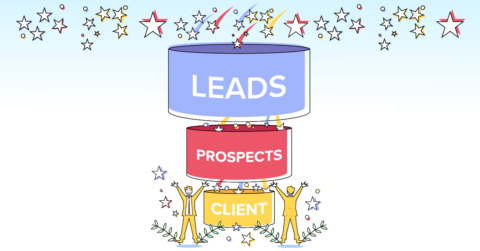
Content Pillars: What They Are And Why They’re Important
06/16/22
Content
Today we are going to be talking about content pillars. We will cover what they are, why they are important for your overall content marketing, and how exactly to set them up.
Let’s get started.
What Are Content Pillars?
A content pillar is a way of organizing your content. Another version (although slightly different) can be called the “hub and spoke” model.
How a content pillar is organized is broken down into two main parts:
- Big “pillar” or “hub” pieces of content that are deep dives into a more general topic. This is usually a piece of content like an “ultimate guide” blog post or an in-depth YouTube video explaining everything you need to know about a subject.
- Smaller pieces of content that are attached to your bigger pillar piece. These are usually more focused on a specific topic (“How To Write a Blog Post” vs. the more general “Guide to Content Marketing”) and often link to one another.
Content pillars are used as a way for a business to effectively plan and execute a content strategy. Instead of simply creating a haphazard collection of content, content pillars bring order to what can otherwise be a messy process.
Why Are Content Pillars Important?
To understand why content pillars are important for your business, it’s worth reflecting on the general usefulness of content marketing. Here are just a few of the business benefits that content marketing can offer you:
- Provides value to your audience. This builds up trust over time and is more likely to persuade them to buy your product or solution.
- Allows you to demonstrate authority in your niche. By educating people, you give yourself a competitive advantage over the competition by providing answers to questions.
- Can position your solution as the answer to the problems faced by your audience. This is difficult to do when you rely on more aggressive tactics like paid advertising alone.
If you want to see even more benefits of content, check out our ultimate guide to content marketing. Long story short? Content is important, and you are missing out if you don’t do it.
A content pillar is how you effectively organize your content. It makes the “content consumption” experience much more valuable for your audience, because there is a much clearer connection to the topics you cover.
Plus, basing your content plan on content pillars is also great for search engines. Google likes a website that has a clear structure with the content it displays, and is likely to rank you higher because of it.
How To Set Up A Content Pillar
1) Look at the content you already have
Likely, you have already been producing content of some sort for a while. This gives you a good place to start. Look at what you have and think about how it has performed. Did people like what you created? Did they comment on it, share it on social media platforms, or even directly ask you to create more pieces that are similar? This is a good sign that they found value in it. If you don’t already know what type of content performs best, though, it’s time for step #2.
2) Plan what your main types of content are going to be
There is no use structuring your content as content pillars if you are making the wrong kind in the first place. This is where keyword research comes in. Going through this process will not only show you what types of content your audience wants to consume, but where you have “content gaps” as well.
In order to keep things organized, consider storing your content ideas in a tool like Trello. This is one of the software solutions we use at Lúgh Studio and it comes in handy for our content creation.
3) Plan your content pillars
Now that you know what type of content you need to make, it’s time to break it down into a few “main topics.” These will be your pillar topics, or the main “general” pieces of content you make. Remember, these should be big, informative videos or posts that show your prospect everything they need to know about a more general topic.
Try for a combination of big topics people want to know about and topics that your business has the expertise to educate on. This is the best combination for interesting content that people get a ton of value from.
4) Plan your smaller pieces of content
Again, these are smaller, more specific topics that can fit into your pillar pieces. A good rule of thumb here is to expand on several topics that were just briefly touched on in your pillar content. This will take everything a person might want to know about a smaller topic and educate them deeply on the subject.
5) Start creating
Now comes the most difficult part: actually creating the content you have planned. Remember, you don’t want to create content for the sake of it. Instead, the content that you do make should be easy to consume, entertaining, and most important of all, informative. You should be aiming for content that’s not only good, but “10x” whatever anybody else is making.
This can be a difficult goal to aim for but it’s worth it. Exceptional content will position your brand as an expert that people then want to buy from.
…
Are you an enterprise, nonprofit or small business looking for help on your website? Give us a shout! We provide a free consultation. Email us at info@lughstudio.com or call us at (718) 855-1919!









